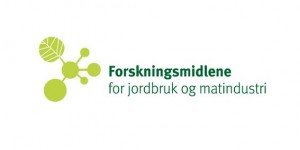Innflytelse fra hesteassistert terapi (HAT) på avhengighetsbehandling og dens effekter.
- Status Avslutat
- Projektnummer H1047212
- Ansökningsår 2010
- Slutrapport 19 december 2014
- Organisation Oslo Universitetssykehus - Aker
- Huvudsökande Espen Arnevik
- E-postadress esparn@aus.no
- Telefon +4722029302
Dette prosjektet har som målsetning å analysere effekten av heste-assistert terapi (HAT) for unge rusavhengige pasienter henvist til Oslo Universitets Sykehus (OUS). Resultatene fra prosjektet inbefatter en analyse av publiserte artikler, samt kvantitative og kvalitative studier av HAT for unge rusavhengige. Prosjektet inkluderer også video intervensjonsbehandling (VIT) som en ny metode i HAT. En randomisert klinisk studie (RCT) ble startet i 2013, og pågår fortsatt. En kost-nytte analyse vil bli gjort etter at RCT’en er fullført. Resultatene så langt har gitt positive, statistisk signifikante resultater og et rikt materiale av kvalitative data. Resultatene har blitt meget godt mottatt i internasjonale og nasjonale faglige fora og har fått omfattende omtale i media. En artikkel er under vurdering i et internasjonalt peer reviewed tidsskrift og 2 andre er i avsluttende fase før innsending. I tillegg planlegges flere artikler og fullføring av en PhD grad basert på prosjektet i 2015.
RIDING OUT OF ADDICTION?
“The only thing that keeps me in this …. place is the horses”
Recent research into addiction treatment outcomes has found that young people who undertake therapy involving horses have almost a four times better chance of a positive treatment outcome. Patients claim the horses are helpful and motivating, saying the horses “keep me in treatment” or “ they teach me more than all the talk in an office or meeting room” Many add “and it’s fun.”
Horses have worked with patients at Oslo University Hospital (previously known as Gaustad) since 1974. Skilled therapists, who are also qualified riding instructors are responsible for the horse assisted therapy program.
Now a major research study, funded by the Swedish-Norwegian Foundation for Equine Research, is measuring the impact of the horses on addiction drop out and treatment. The study includes assessing the evidence of whether horse assisted therapy works and if so, why patients and clinicians think it helps.
Preliminary results have been reported internationally to the International Scientific Addiction Medicine (ISAM) Conference in Geneva in 2012, the Horses4Humans Conference in Germany 2013 and the Second Nordic Seminar on Equine Assisted Psychotherapy, Stockholm 2014. These show that patients who had horse assisted therapy as part of their treatment program had a much high possibility of remaining in treatment and obtaining a successful outcome than those who did not do work with the horses.
The therapy involves a range of, ground based (grooming, leading, etc), mounted and driving activities. During the early therapy sessions patients get to know the horses, learn about horse behavior, safety and how to do basic tasks such as grooming, leading and tacking up. Even patients with previous horse experience do these introductory sessions, often taking on a supporting role to those who have little or no experience. In the following eight sessions the patient, horse and therapist undertake activities and exercises aimed at addressing specific agreed objectives, such as dealing with anxiety, aggression, the need to set and maintain safe boundaries, etc.
Many therapists and clients who have experienced horse assisted therapy believe it is effective but there is little scientific evidence to convinces health service providers or insurance companies to fund it.
The Horse Assisted Therapy Research Project includes six completed studies. Others are still underway. They have involved a combination of quantitative and qualitative research which was conducted as part of the hospital’s ethically approved Youth Addiction Treatment Evaluation Project (YATEP). Patient participation is voluntary and subject to informed and signed consent. A series of scientific papers will report the results in appropriate journals.
Many patients thought the horses were big and scary when they first met them. But after they worked with them, patients said the horses seemed to understand how they were feeling and responded in a way that helped. Many patients said they felt good when they were with the horses who did not judge them, as people often did. They said they were learning from the horses and often felt a sense of “mastering”, not just of the horse but of themselves as well.
This project was undertaken at a hospital. However, horse assisted therapy can be community based if it is provided by trained and accredited therapists. Community based horse activity programs may enable ex-patients to join with other non-addicts and engage in healthy, pleasurable and rewarding outdoor activity. In other words it may help ex-drug addicts to make a new start in life.
For more see http://www.rus.no/id/820.0 & http://www.famo.no/TSB/AnnKern/vimeo.html













